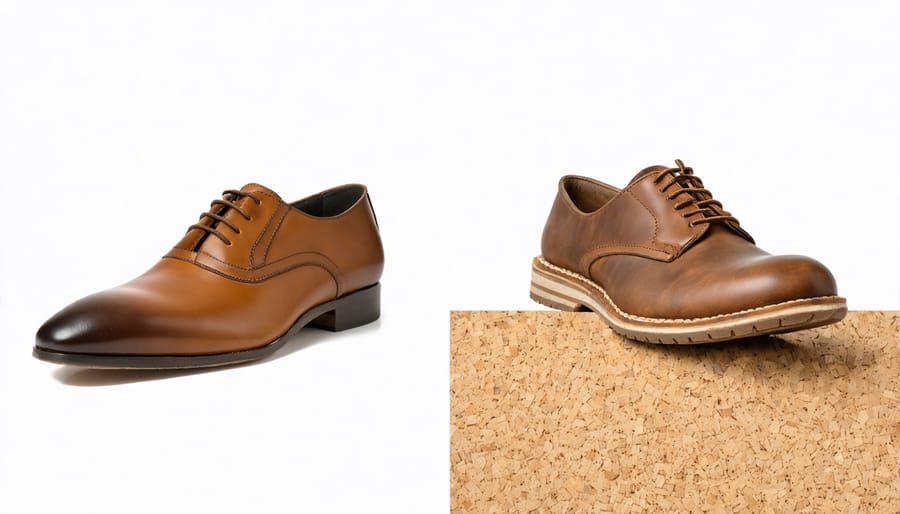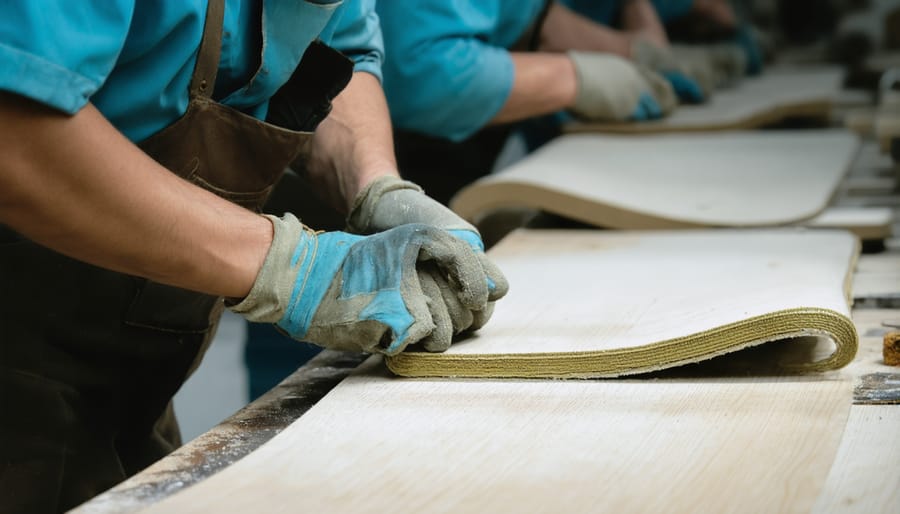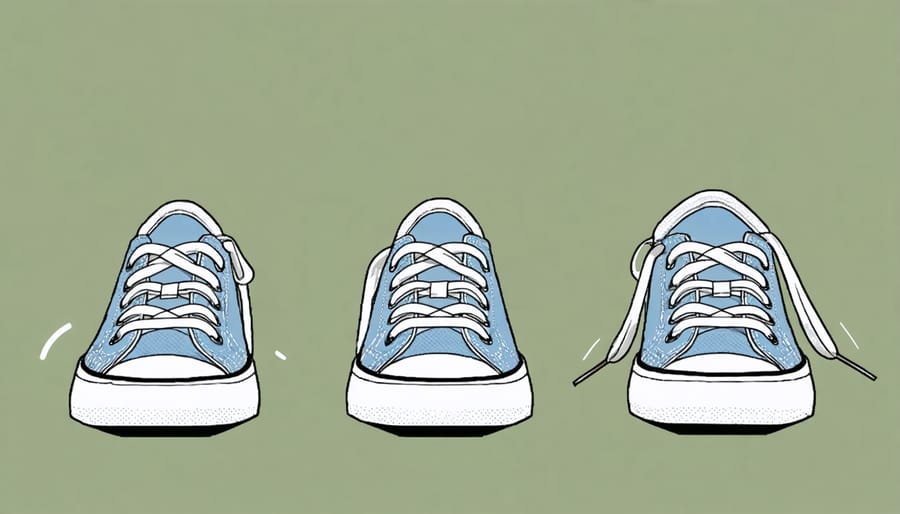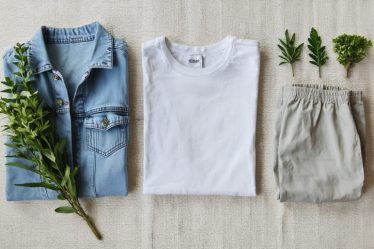
Step into a world where style meets sustainability, where every footstep leaves a lighter impact on our planet. The revolution in eco-friendly footwear isn’t just changing how we shop—it’s transforming the entire fashion industry. From innovative materials like recycled ocean plastics and organic cotton to groundbreaking production methods that slash carbon emissions, sustainable shoe brands are proving that conscious consumption doesn’t mean compromising on style or comfort.
As someone who’s spent years testing and researching sustainable footwear options, I’ve witnessed firsthand how these forward-thinking brands are reimagining what’s possible in shoe design. Whether you’re a dedicated environmentalist or simply looking to make more mindful purchasing decisions, today’s sustainable footwear options offer something for everyone—from sleek everyday sneakers to professional wear that makes a statement without saying a word.
In this guide, we’ll explore the leading sustainable footwear brands that are setting new standards for environmental responsibility while delivering the quality and style you deserve. Let’s walk together toward a more sustainable future, one step at a time.
Why Sustainable Footwear Matters
The Environmental Cost of Traditional Shoes
Did you know that the average pair of sneakers generates roughly 30 pounds of carbon emissions during production? That’s just the beginning of the environmental story behind our everyday footwear. Traditional shoe manufacturing is one of fashion’s hidden environmental culprits, with the industry producing over 23 billion pairs of shoes annually, most of which end up in landfills within a year of purchase.
The numbers are sobering: it takes about 2,000 gallons of water to produce just one pair of conventional leather shoes, and the process often involves harmful chemicals and synthetic materials that can take up to 1,000 years to decompose. Like other aspects of quality sustainable fashion, the footwear industry is facing a crucial moment of transformation. Studies show that approximately 85% of shoes end up in landfills, contributing to the 300 million pairs discarded annually in North America alone. These statistics highlight why making mindful choices about our footwear is more important than ever.
What Makes Shoes Sustainable?
When it comes to sustainable footwear, it’s all about the thoughtful combination of eco-friendly materials and responsible production practices. The most sustainable shoes often feature materials like organic cotton, recycled plastics, natural rubber, and cork – all chosen for their lower environmental impact. Some brands even use innovative materials like pineapple leather or algae-based foam!
But sustainability goes beyond just materials. The best eco-friendly shoe brands prioritize ethical manufacturing processes, ensuring fair wages and safe working conditions for their workers. They often employ local artisans and maintain transparent supply chains, so you know exactly where your shoes come from.
Look for certifications like Fair Trade, B Corp, or GOTS (Global Organic Textile Standard) when shopping. These stamps of approval indicate that a brand meets strict environmental and social standards. Energy-efficient production methods, minimal waste practices, and recyclable packaging are other key factors that make shoes truly sustainable.
Remember, the most sustainable shoe is one that lasts, so durability is just as important as eco-friendly materials!

Leading Sustainable Footwear Brands
Innovative Materials and Design
When it comes to sustainable fashion that lasts, innovative materials are revolutionizing how we think about footwear. Gone are the days when eco-friendly meant compromising on style or comfort. Today’s sustainable shoe brands are pushing boundaries with groundbreaking materials that are kind to both our feet and the planet.
I’m particularly excited about brands using recycled ocean plastics to create breathable mesh uppers and durable soles. One of my favorites transforms plastic bottles into premium shoe fabrics, giving new life to materials that would otherwise end up in landfills. Another remarkable innovation is the use of natural cork in insoles, which provides excellent cushioning while being completely biodegradable.
Plant-based alternatives are also making waves in the industry. From pineapple leather (known as Piñatex) to mushroom-based materials, these innovative solutions offer the same luxurious feel as traditional leather without the environmental impact. Some brands are even experimenting with algae-based foam soles that help clean our waterways during production.
What truly impresses me is how these materials are incorporated into thoughtful designs. Many brands now use modular construction methods, allowing individual parts to be replaced rather than disposing of the entire shoe. This approach not only extends the life of your footwear but also reduces waste significantly. The result? Beautiful, durable shoes that make a positive impact on our environment.
Vegan and Cruelty-Free Options
For those committed to a cruelty-free lifestyle, finding stylish vegan footwear has never been easier. Just like other eco-chic brands, these innovative shoe companies are proving that fashion can be both kind to animals and the environment.
NAE (No Animal Exploitation) leads the pack with their cork and pineapple leather sneakers, while Will’s Vegan Shoes offers everything from work boots to elegant heels made from bio-based materials. I recently tried their waterproof boots, and they’ve held up beautifully through rain and mud – proving that vegan materials can be just as durable as traditional leather.
Native Shoes creates playful, lightweight footwear using plant-based materials and innovative recycling programs. Their entire collection is 100% animal-free, and they’ve even developed a way to turn old shoes into playground materials.
Matt & Nat’s footwear line extends their renowned commitment to vegan fashion into beautiful, minimalist designs using recycled plastic bottles and rubber. The best part? These brands prove that choosing cruelty-free doesn’t mean compromising on style or quality. Many of their designs are so sophisticated that even my non-vegan friends regularly ask where I got my shoes!
Remember to check for certifications like PETA-approved vegan and Vegan Society trademarks when shopping for animal-free footwear.

Ethical Production and Fair Labor
When I first started exploring sustainable footwear brands, I was amazed to discover how many companies are putting their workers first while creating beautiful shoes. These brands aren’t just focusing on environmental impact; they’re revolutionizing the footwear industry with their commitment to fair labor practices and ethical manufacturing.
Take Nisolo, for example. This Nashville-based brand ensures their factory workers in Peru earn above-market wages and receive healthcare benefits – something that’s unfortunately rare in the footwear industry. They regularly publish impact reports detailing their progress toward living wages across their supply chain.
Another standout is Veja, which sources wild rubber directly from communities in the Amazon, paying producers fair prices while protecting the rainforest. Their transparency about working conditions and wages has set new standards in the industry.
ABLE is making waves with their published wages initiative, becoming the first fashion brand to publish their lowest wages. This level of transparency helps consumers make informed choices while encouraging other brands to follow suit.
What truly touches me is how these brands view their workers as partners rather than just employees. From providing skills training and education programs to ensuring safe working conditions and reasonable hours, they’re proving that beautiful, high-quality footwear can be produced while treating people with dignity and respect.
Remember, when you choose ethically-produced footwear, you’re not just buying shoes – you’re supporting communities and helping create positive change in the fashion industry.
Caring for Your Sustainable Shoes

Maintenance Tips
Taking proper care of your sustainable footwear not only extends its lifespan but also helps minimize your environmental impact. For cork-based shoes, use a soft brush to remove dirt and apply a natural cork sealant every few months to maintain water resistance. When cleaning bamboo or hemp materials, stick to cold water and mild soap, avoiding harsh detergents that can break down natural fibers.
For recycled plastic shoes, a simple wipe-down with a damp cloth usually does the trick. However, if they need deeper cleaning, use an eco-friendly shoe cleaner and avoid the washing machine, which can damage the recycled materials. Organic cotton footwear can typically be hand-washed or spot-cleaned, but always air dry to prevent shrinkage.
Natural rubber soles can be cleaned with a mixture of water and vinegar, while sustainably sourced leather requires regular conditioning with natural leather care products to prevent cracking. Consider using beeswax-based waterproofing sprays for added protection. Remember to rotate your shoes regularly and use shoe trees made from sustainably harvested cedar to maintain shape and absorb moisture naturally.
End-of-Life Solutions
Ever wondered what happens to your sustainable shoes when they’ve walked their last mile? The good news is that many eco-conscious footwear brands now offer innovative end-of-life solutions. For instance, I recently discovered that several companies have partnered with recycling programs that break down old shoes into their component materials for reuse in new products.
Some brands offer take-back programs where you can return your worn-out shoes directly to them. They’ll handle the recycling process, often giving you a discount on your next purchase as a thank-you. I particularly love how some companies transform old shoes into playground surfaces or athletic tracks – talk about giving your shoes a meaningful second life!
For shoes that are still wearable but no longer your style, consider donating them to local shelters or second-hand stores. Many sustainable shoe brands also partner with charitable organizations that distribute gently used footwear to communities in need.
Remember, even if your sustainable shoes have reached the end of their journey, their materials can continue to serve a purpose rather than ending up in a landfill. It’s just another way we can step lightly on our planet!
Every step we take in sustainable footwear makes a difference – quite literally! As someone who made the switch to eco-friendly shoes several years ago, I can tell you that the impact goes far beyond just feeling good about your purchase. When we choose sustainable footwear, we’re voting with our dollars for a cleaner planet, better working conditions, and innovative materials that reduce our environmental footprint.
Remember, transitioning to sustainable footwear doesn’t mean replacing your entire shoe collection overnight. Start by making mindful choices when you need new shoes, and consider the lifecycle of each pair you buy. Could they be repaired instead of replaced? Are they versatile enough to serve multiple purposes? These small decisions add up to meaningful change.
I’ve found that my sustainable shoes not only last longer but have become conversation starters, helping spread awareness about eco-friendly fashion choices within my community. Whether you’re just beginning your sustainable fashion journey or you’re already committed to ethical shopping, every conscious purchase helps build momentum toward a more sustainable fashion industry.
Let’s make our footprints count – both in style and sustainability. The next time you’re shopping for shoes, take a moment to consider the impact of your choice. Your feet, the planet, and future generations will thank you for it.



